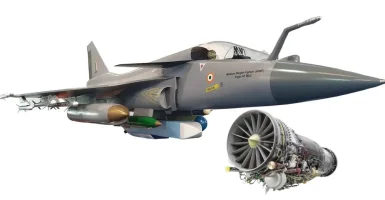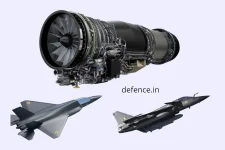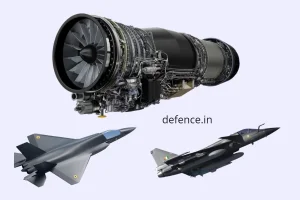- Views: 3K
- Replies: 9
India's indigenous fighter jet programs, the Tejas Mk2 and the Advanced Medium Combat Aircraft (AMCA), are testaments to the nation's ambition for self-reliance in military aviation. However, a key difference between these two aircraft lies in their intake design.
While the AMCA embraces Diverterless Supersonic Inlet (DSI) technology, the Tejas Mk2 retains a more traditional design. This difference reflects distinct design philosophies and priorities.
DSI intakes are a modern innovation in aircraft design, especially for fighter jets. They replace traditional intake systems with diverter plates, offering several advantages:
- Reduced radar cross-section: Fewer moving parts result in lower radar signature, crucial for stealth aircraft.
- Reduced drag: Improved aerodynamic efficiency.
- Enhanced airflow management: Potentially better airflow to the engine.
The Tejas Mk2 prioritizes enhanced maneuverability, payload, and avionics. Retrofitting it with DSI would have necessitated significant redesign, potentially leading to delays and cost overruns. The development strategy for the Tejas Mk2 aimed to balance performance enhancements with practical considerations of budget and timeline.
While the Tejas Mk2 incorporates some stealth features, it was not designed with the same level of stealth priority as the AMCA. The Mk2's operational profile does not require the same degree of radar evasiveness that DSI provides.
In contrast, the AMCA is envisioned as India's first true 5th generation fighter, with stealth as a core design parameter. DSIs play a crucial role in minimizing its radar cross-section by eliminating external moving parts in the intake system.
Unlike the Tejas, which evolved from an existing platform, the AMCA is a clean-sheet design, allowing engineers to incorporate advanced technologies from the outset. This includes adopting DSIs to achieve the aircraft's stealth objectives.
The decision to forego DSI on the Tejas Mk2 can be seen as a strategic choice to expedite the aircraft's entry into service. The AMCA, with its longer development timeline, allows for the integration of such advanced technologies without compromising its development schedule.
In essence, the Tejas Mk2 and AMCA represent different stages in India's journey towards self-reliance in fighter aircraft technology. The Tejas Mk2 prioritizes rapid development and cost-effectiveness, while the AMCA pushes the boundaries of technological advancement with a focus on stealth capabilities.



